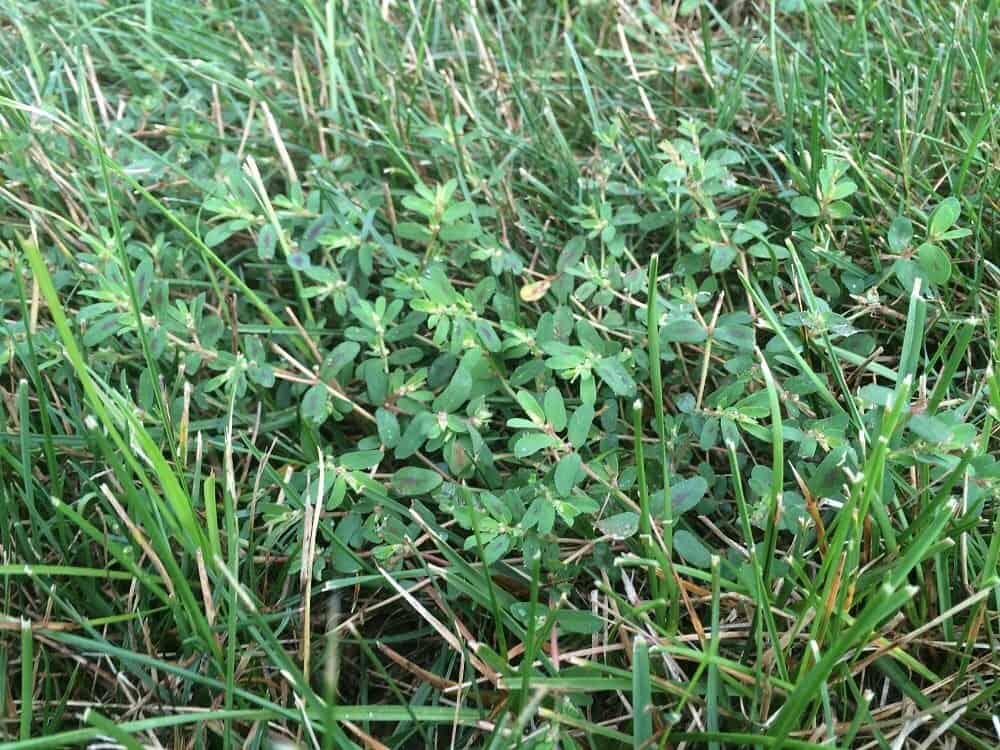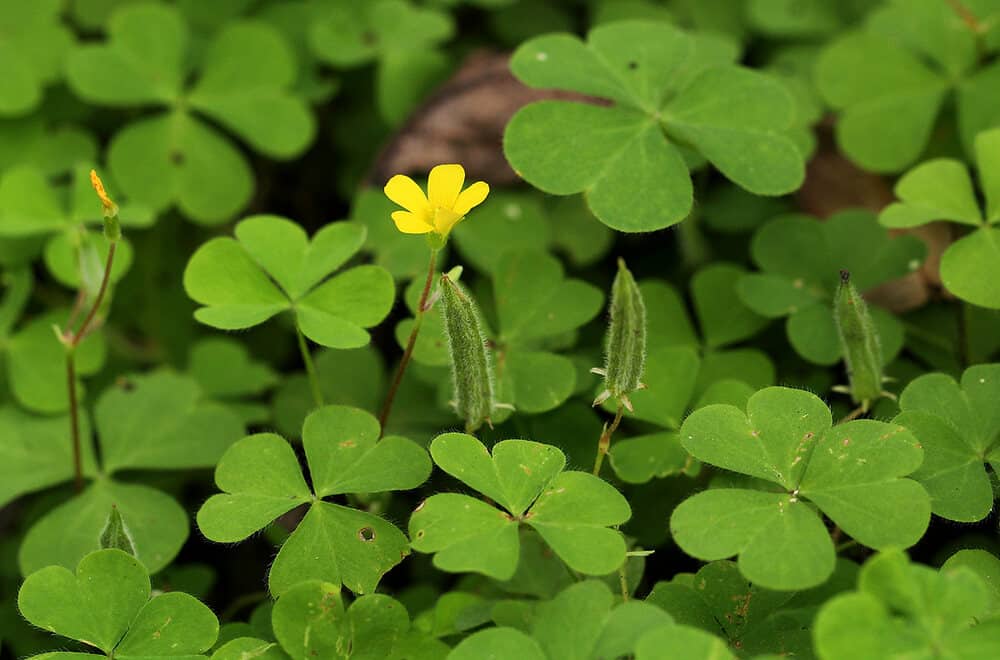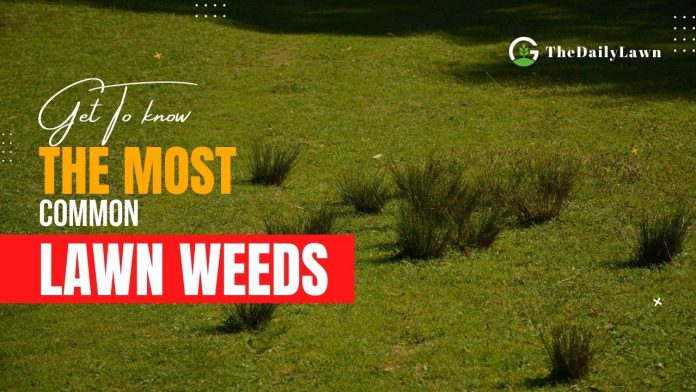A year ago, we visited a nearly dead lawn at the request of a familiar person. She was a new lawn owner, and she could not identify the problem on her lawn. As we see, she didn’t know about the most common lawn weeds, which made the problem on her lawn.
Her lawn has more Crabgrass than the original grass type. And she failed to identify it because Crabgrass looks similar to most lawn grasses. Because of the enormous amount of Crabgrass, the lawn is nearly dying and doesn’t have an expected appearance.
However, we know that many of you actually cannot figure out a lot of lawn weeds. So, we feel the essence of introducing you to the most common lawn weeds. I hope it will significantly help identify the weeds on your lawn and take necessary actions against them. So, let’s start it.
10 Most Common Lawn Weeds You Should Get Introduced to
Undoubtedly, hundreds of lawn weeds can appear on your lawn. But it is impossible to list all of them here in one place. Don’t worry; most of them don’t look like grasses, so you can easily identify them if they start growing on your lawn. So, we are not listing them here.
Instead, we will only list ten common grass-like lawn weeds that cause actual harm to your lawn. Make sure to check their image to identify them and read out the details so that you can find how to get rid of them.
1. Crabgrass

Basically, Crabgrass is an annual type of grass weed. It prevails in dry soil, so drying out and weeping won’t work much. The good thing is it is not much harmful as some other weeds. The presence of Crabgrass will not eat up all the nourishments allowed for the lawn grass. To get rid of Crabgrass, you should use pre-emergent herbicide; other ways are not very effective.
2. Dandelion

Dandelions get spread easily and possess broad leaves. This does not suit the lawn grass and looks pretty odd. Even if you cut them down, they keep coming back. Its taproot can grow up to 15 feet which is quite large. Its seeds are airborne, making it far-reaching from one place to all over the lawn turf.
The best way to get rid of Dandelion is by applying broadleaf herbicide all over the lawn as required. Dandelion can thrive on most types of soils and poses quite a significant risk for the primary lawn grasses’ health and growth.
3. Chickweed

It generally comes in the winter season and gives star-like flowers. Chickweeds are easy to get unnoticed as they grow at the ground level; even mowing won’t do much against them. You will require broadleaf herbicide to keep it at bay. The right time for the herbicide application is early winter.
This common weed can thrive in most types of lawn soils and especially in shaded areas. You can easily track it by its star-shaped flowers. Its leaves get folded in the rain and night-time. You can also pluck them up, but you have to make sure to get the roots out of the soil.
4. Ragweed

Ragweed produces an abundant amount of pollen which might cause allergic reactions. A single ragweed plant can release over a billion pollen grass which could be pretty severe for pollen-sensitive persons.
You can use post-emergent broadleaf herbicide from the middle of spring to early summertime to eliminate this unwanted weed from the lawn. Conventional cutting could also work well with good mowing and edge cleaning.
5. Creeping Charlie

This broadleaf perennial type plant gives clusters of purple flowers in the spring. So, finding them out is pretty straightforward. Strikingly, it also releases a mint-like fragrance. Unfortunately, this plant is a red flag, and it is toxic to horses and probably to some other animals.
Proper care, nourishment, and adequate sunlight can keep the creeping charlie at bay, and its growth is already present on the lawn. Moreover, that will boost the growth of the main grass types. If needed, you can use appropriate herbicides in the fall and spring times.
6. Spotted Spurge

It requires quite some work to get them out of the lawn. Spotted Spurge like compacted and malnourished soil. So spotted Spurge won’t even come to your lawn ground if you take proper care and provide needful resources to the lawn turf. The following procedures are for the already impacted lawn.
You have to root out all the signs of the spotted Spurge. Then offer herbicide on the soil. In this case, both pre-emergent and post-emergent herbicides are needed. The best time to apply fertilizers and herbicides are late spring and early summer. Once removing them, you must take good care of your lawn.
7. Oxalis

This plant is not just the only problem if you find it on the lawn. It means your lawn might have insects, the deteriorated pH level of the soil, lawn diseases, and much more. So, don’t wait for more; just rip out the Oxalis plants, and apply post-emergent herbicides after cleaning. If the plant is in the early phase of its growth, you should try pre-emergent herbicide after weeding them out.
8. Quackgrass

It has long underground rhizomes, making it pretty hard to get rid of. All types of soils are suitable for this weed, yet it grows more in sandy and mild dry soils. You should pluck this weed out with your hand or with any plucking tool. The roots should be removed from the soil without any mistakes. After removing the plants, applying a post-emergent herbicide will do the rest of the good work.
9. Lambsquarter

The best way to get rid of this weed is to pull them out by hand or any other tool. If the plant is large, then you may require a shovel to dig up the roots from the deep soil. After removing Lambsquarter from the lawn, you must use post-emergent herbicides to ensure preventing this weed.
It generally thrives on warm days, especially in the late spring and hot summer days. You can track it down quickly by observing the diamond-shaped leaves with an unusual white coating underneath their leaves. Lambsquarter contains oxalic acid, which is harmful to some animals. Moreover, it is also a great host for viral plant diseases.
10. Bull Thistle

You must pluck them up first if Bull Thistle is already on the lawn. Make sure the taproot and seeds are removed from the soil. Then contain them in an airtight bag so extra safety. After that, you have to apply post-emergent herbicides on the lawn turf. It is best to do this in spring, especially in the early phases.
Even if you get rid of Bull Thistle, for the time being, it is always best to apply appropriate herbicides on a routine basis annually or biennially to keep the Thistle plants away from your lawn. Note that it features sharp spines, which can hazard people and animals. Furthermore, you should provide proper fertilizers to the soil and timely mowing to get the best outcomes.
So, these are the most common lawn weeds that can grow in the yard. There is no particular season for these weeds to grow. But in the summer, most weeds grow vigorously. Make sure to keep your lawn free from weeds to let the grass grow simultaneously. And once you figure out what types of weeds appear on your lawn, it will be easier to get rid of them.
FAQ
Q: How can I get rid of grass-like weeds from the lawn?
A: There are different types of lawn weeds that actually look like grasses. You need to use some effective weedkillers and herbicides to get rid of that kind of grass weeds. In this case, Oryzline works very effectively. You can also hand-pull those weeds and then use natural herbicides to prevent them from growing on your lawn.
Q: Is Crabgrass dangerous for my lawn?
A: Crabgrass is one of the most common lawn weeds and definitely a threat to your lawn. It can take over the place where the regular grass was born. And when it dies, it simply leaves a bare spot on the lawn. Besides, it dies too soon, so you can’t keep it as lawn grass. Also, the roots of the Crabgrass are long, so it can continue growing on the lawn and hamper the growth of the lawn grass.
Q: Is there any natural way to get rid of lawn weeds?
A: There are different ways to get rid of lawn weeds naturally. Table salt water, vinegar, essential oil, etc., are well-known as natural weed killers. Some people will suggest you pour boiling water on the weeds or just burn them on fire. But we don’t suggest those ideas at all. These tricks will damage your lawn grass along with the weeds.
Q: What is the best way to kill lawn weeds from the roots?
A: Pulling them off by hand is better if you want to kill lawn weeds from the roots. But make sure to pull their roots too. If your lawn has numerous weeds, you better apply some store-bought herbicides. Glyphosates are a very effective herbicide that kills the weeds from the roots.
Q: Can table salt stop growing lawn weeds?
A: Yes, table salt can prevent lawn weeds from growing. But you have to use it in the right way. Just mix a few pinches of salt with a liter of water. Take the solution in a bottle and give it a good shake. Then spray the water on the lawn. Make sure that the water is absorbed by the weeds properly.
Final Verdict
It doesn’t matter how much you take care of your lawn; it grows weeds of different types. But if you manage to take the necessary steps to get rid of the weeds, your lawn will be safe. For that, you need to identify them first.
Hopefully, this brief guide to the most common lawn weeds will help you identify the weeds on your lawn. So, once you find them appearing on the lawn, make sure to pull them off and then use herbicides to prevent their further growth. Weeds are not good for your lawn, even if it is daffodils with beautiful flowers. So, make sure to keep your lawn safe from those weeds.
Now, let us know what type of weeds appear so frequently on your lawn. Also, tell us how you get rid of them. We will wait for your response. Thank you for staying with us.
